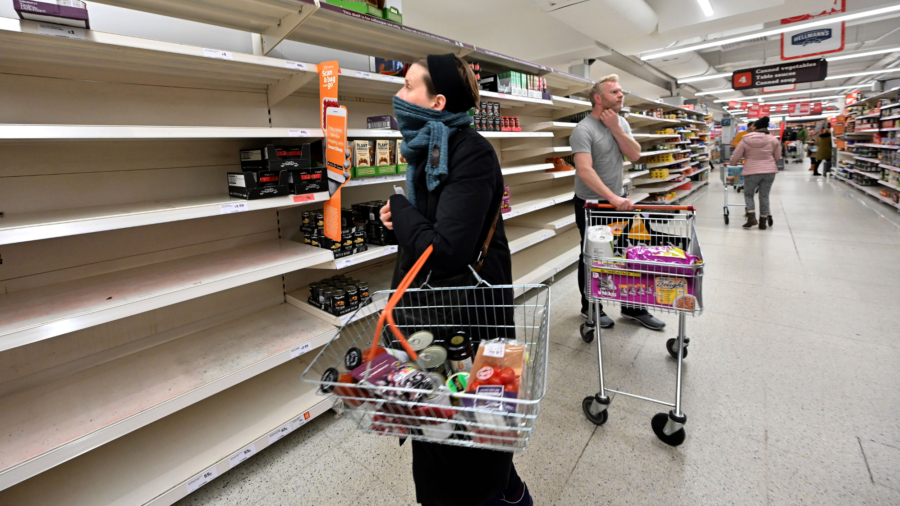Supermarkets in the UK are cutting their product ranges in order to meet increasing demand and keep up the supply chain as customers stock up on food amid the CCP virus pandemic.
NTD refers to the novel coronavirus, which causes the disease COVID-19, as the CCP virus because the Chinese Communist Party’s coverup and mismanagement allowed the virus to spread throughout China and create a global pandemic.
Wholesalers are having a hard time keeping supermarkets and grocery stores stocked, but one strategy some chains in the UK are trying is cutting product ranges.
“We currently sell 60 types of sausages—we are moving to a fraction of that,” said one grocery store, according to the BBC.
“We need to make food manufacture as efficient as possible—it makes no sense to pause to change packet sizes or change from one type of pasta to another. We have 20 different sizes and styles of pasta, we are moving that to six,” another store said.

With people increasingly eating at home, the demand for groceries is predicted to rise by 20 to 25 percent, according to Clive Black at Shore Capital Markets.
The UK also loosened competition laws, creating more flexibility in pooling staff, depots, and distribution trucks. Distributors enjoy widened time windows for delivering commodities and personnel are encouraged to working longer, more shifts.
“The order systems in retailers are sophisticated enough that they don’t normally have to be overridden,” said Tim Smith, former head of the Food Standards Agency, according to the Financial Times. “The modeling is excellent in a steady-state—you don’t often see gaps in normal trading [and] availability is a critical measure for any retailer. It works perfectly until people don’t behave in the same way they are expected to.”
Meanwhile, “social distancing” has become a challenge and a norm in the distribution business.
“Social distancing is tricky to do in the food industry but we are working our way through practical solutions—greater sanitation protocols, staggering use of changing rooms, how you increase the availability of locations for people eating food on-site, building extra space into the production processes themselves,” Patrick Coveney, chief executive of Greencore, a convenience foods manufacturer told the outlet.
Companies are also making emergency plans, preparing for up to 30 percent loss of personnel due to sick leave.
“I think a narrative of supporting the people who are at significant personal effort and risk . . . working to keep the population fed across supermarkets, distributors and manufacturers will also be very important,” Coveney added.


